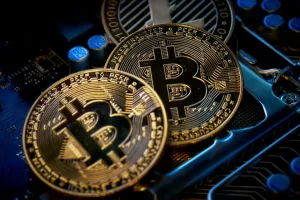Ryukyuan Culture: Once a Kingdom, Always a Legacy
Long before it became Japan’s southernmost prefecture, Okinawa was the proud seat of the Ryukyuan Culture Kingdom — a thriving island nation that traded with China, Korea, and Southeast Asia. Its capital, Shuri, was home to kings, diplomats, and artisans whose legacy still colors the island’s identity. Even after annexation by Japan in the 19th century and decades of postwar U.S. control, Okinawa has retained its distinct cultural heartbeat.
Today, echoes of this legacy remain everywhere — in the music played on the sanshin, the dance of the Eisa drums, and the bold hues of the Ryuso attire.
Food as Medicine: Ryukyuan Culture Wisdom
Okinawan cuisine is not just about taste — it’s deeply rooted in the concept of healing. Dishes like goya champuru, rafute, and Okinawa soba blend native ingredients and Chinese influences, reflecting the island’s historical connections.
The local philosophy of nuchigusui, or “life medicine,” treats food as nourishment for both body and soul. Staples such as shikuwasa citrus, purple sweet potatoes, and fermented tofu are as flavorful as they are functional.
Threads of Identity: Okinawan Textiles and Fashion
Artisans in Okinawa continue to revive ancient textile traditions like bingata, a vibrant dyeing technique once reserved for royalty. These hand-dyed fabrics, featuring motifs of flora and fauna, are more than decorative—they’re historical statements.
Lighter than the Japanese kimono, the traditional Ryuso was designed for Okinawa’s subtropical climate and often features red and yellow as dominant colors. Each pattern told a story — of rank, role, and personal identity.
Language, Music, and Martial Arts
The Okinawan language, Uchinaaguchi, is now endangered but still spoken in rural communities and preserved through music, poems, and oral storytelling.
At the heart of Okinawan sound is the sanshin — a three-stringed lute made with snakeskin. This instrument is central to everything from soulful ballads to festival anthems.
Okinawa also gave birth to karate. Rooted in discipline and self-awareness, the martial art is still practiced widely on the island, with dojos offering immersive lessons to curious visitors.
Spiritual Symbols and Beliefs
No trip to Okinawa is complete without meeting a shisa — the lion-dog guardians perched atop rooftops and gates. These statues, often in playful or fierce expressions, ward off evil and protect the home.
Then there’s the ishiganto, inscribed stones placed at intersections to confuse malevolent spirits believed to travel in straight lines. It’s geomancy meets folklore — an invisible map of protection.
Even in death, Okinawan tradition shines through. Family tombs called kamekōbaka resemble turtle shells and symbolize long life and ancestral honor. Sites like Tamaudun Mausoleum offer a royal glimpse into the Ryukyu past.
A Culture Worth Fighting For
Preserving Okinawan culture is more than nostalgic—it’s essential. As globalization and tourism grow, local artists, teachers, and elders are working to keep these traditions alive. Whether it’s teaching young kids to drum Eisa rhythms, weaving bingata with modern flair, or simply saying “Haisai” in Uchinaaguchi, Okinawa’s people are living proof that tradition and progress can dance hand in hand.
More Stories
Israel Orders Full Evacuation of Gaza City Ahead of Major Attack
The Israeli military has officially ordered the evacuation of the entire Gaza City in preparation for a large-scale military assault....
Spain to Ban Israeli Cargo Ships and Planes from Entering Its Territory
In a major shift in international relations, Spain has announced that it will be blocking Israeli cargo ships and planes...
Putin: Western Soldiers Are Legitimate Targets If They Enter Ukraine
IntroductionIn a shocking statement, Russian President Vladimir Putin declared that any Western soldiers entering Ukraine will be considered legitimate military...
📰 Escalating Violence: Israel Airstrikes Destroy High-Rise Buildings in Gaza City
▶ Brutal Strikes Target Civilian Infrastructure According to local sources and international media, Israeli fighter jets launched a series of...
Coinbase Executive Warns Bitcoin Could Explode Like the South Sea Bubble
In a striking statement that has stirred debate across the crypto industry, a senior executive at Coinbase Asset Management has...
Gemini Crypto Firm Aims for $2.3 Billion Valuation with IPO Plans
Gemini, one of the leading cryptocurrency exchanges, is setting its sights on a massive $2.3 billion valuation as it prepares...

